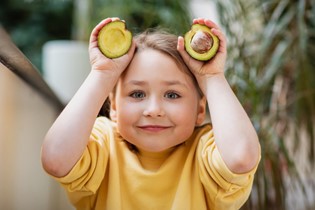10 high-performing foods kids can eat every day
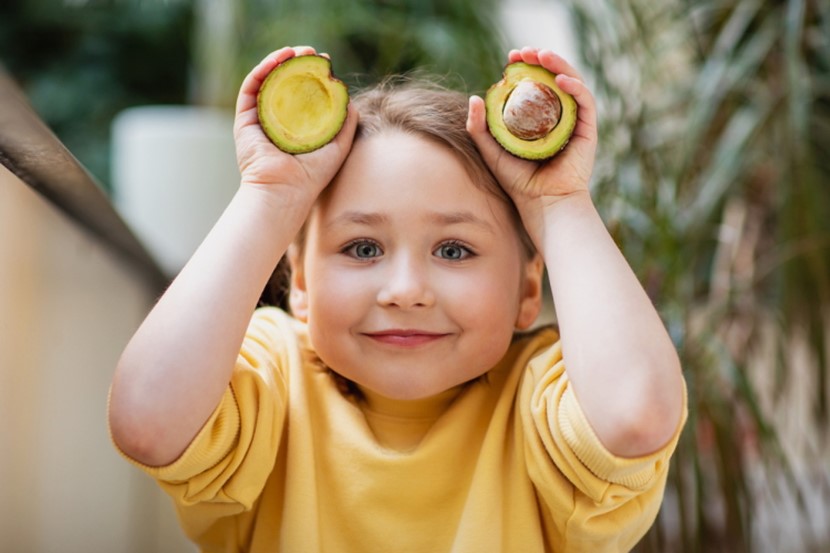
OHbaby! nutritionist Anna Hansen explains the nutritional benefits of 10 high-performing foods kids can eat every day!
As a nutritionist and a mum, I love looking at ways to incorporate nourishing food into kids’ lives. Giving children a taste for healthy food while they are small sets them up with a palate for good food, influencing their food choices for life.
When nourishing our children, the best place to start is with fruit and vegetables. A range of colour on your child’s plate means they are getting a range of goodness, as each colour offers a different combination of nutrients. Ideally, half of your child’s plate should be fruit and veges at each meal and snack.
Lean protein foods are important for growing kids. While fish, chicken, eggs and lean red meat are often parents’ go-to protein foods, it’s also worth introducing plant-based proteins like lentils, chickpeas and beans to your children when they are young.
Healthy fats (including omega-3s) are essential for growing brains and hearts. Avocado, nuts, seeds and oily fish are great sources of the fat growing bodies crave.
Calcium is really important for growing bones. Dairy products provide this essential mineral, but so do nuts, seeds, beans and green leafy vegetables.
Last but not least, wholegrains provide energy your active children need to keep going.
Here are ten foods from these categories that I recommend feeding your kids every day:
Apples are rich in flavonoids which keep lungs and hearts healthy. They also contain pectin, a soluble fibre that helps lower bad cholesterol. Train your little ones to eat apple with the skin on as the skin contains up to five times as many plant chemicals (the good kind) as the flesh.
A fresh apple is an ideal snack on-the-go for busy kids. Try different varieties, as I’ve found children can have preferences.
Top Tip
When it comes to fresh fruit and veges, make sure the produce is at its best. One floury apple or a mandarin that’s on its way to rancidity can potentially put a child off tasting that particular fruit again. If in doubt, try it yourself first. As adults we may be able to suffer through an average apple knowing that the next one we eat will likely be much better. Kids don’t have the same rationale or experience – a bad apple to a child may taint their perception of apples for quite some time. The same goes for veges.
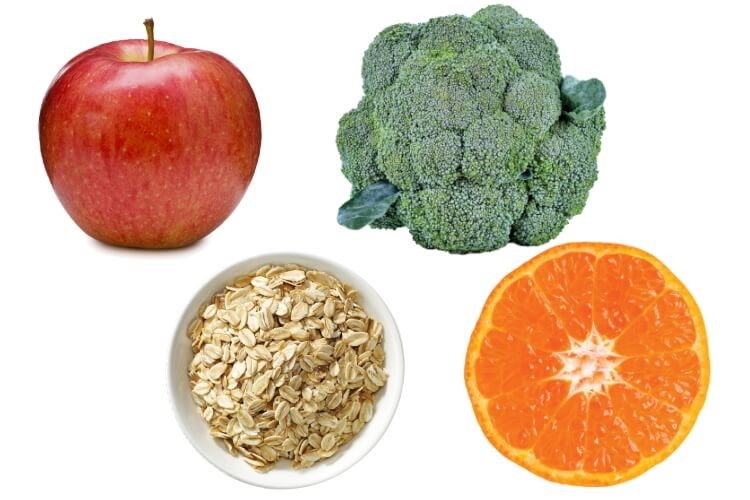
Oats give your active kids energy and will help regulate blood sugar levels. They have a lower glycaemic index than most cereals, so will keep your child feeling fuller for longer. By adding fruit, cinnamon and chopped nuts or seeds to this breakfast staple, you are giving kids the best start to their day. Oat-based cookies are also a hit.
I find broccoli ‘trees’ are one green that most kids prefer. Broccoli is known to contain a variety of nutrients which offer protection against cancer. This wonder vege also contains a high level of calcium. Raw with hummus or a yoghurt-based dip, or lightly steamed on the dinner plate, are kid-friendly serving options.
Oranges are high in vitamin C, a powerful antioxidant which can help prevent infection, heal wounds and may lessen the severity and duration of colds.
It is also well known that vitamin C helps us absorb iron, so by serving half an orange after dinner you will ensure that your child absorbs more of the iron from the meal. Oranges also make the perfect lunchbox fruit cut into segments.
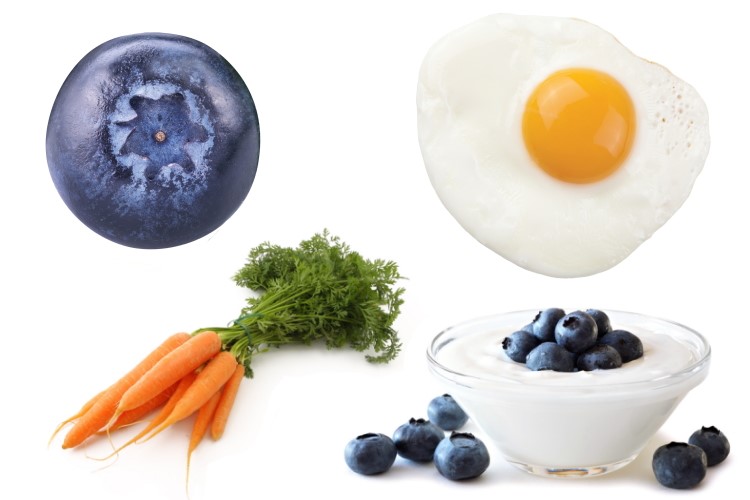 Blueberries are rich in antioxidants, with just a small handful of these berries a day offering protection from a host of different diseases. It’s also thought that blueberries may be effective in fighting bladder infections.
Blueberries are rich in antioxidants, with just a small handful of these berries a day offering protection from a host of different diseases. It’s also thought that blueberries may be effective in fighting bladder infections.
Fresh blueberries are available during the summer and autumn months, and frozen blueberries are a must-have in your freezer, for year-round consumption. Add this yummy berry to smoothies and muffins, sprinkle on top of cereal or add to yoghurt as a snack. Kids even love to eat blueberries still frozen!
Carrots are a rich source of beta-carotene, the precursor of vitamin A which is vital for your child’s vision and skin health, and keeps the immune system strong.
Little ones tend to enjoy carrots raw, as they are quite sweet. They are also tasty lightly steamed, roasted or added to kumara mash.
Eggs are a high quality protein food that are inexpensive, easy to store, easy to cook quickly and loved by kids. They are one food that contains a little of everything the body needs to stay healthy, including B vitamins, selenium, zinc and vitamin D.
Eggs are so versatile – scrambled for breakfast, hard-boiled for lunch or poached for dinner. Just don't forget the toast soldiers!
Probiotic yoghurt is a great source of protein and calcium but the real strength is in the ‘good’ bacteria, known as probiotics, which help keep your child’s tummy well by reducing the levels of ‘bad’ bacteria. The bacteria culture in yoghurt also consumes a lot of the lactose found in milk, so even those who are lactose intolerant can often eat yoghurt. Check the yoghurt label for live probiotic cultures (like Lactobacillus acidophilus).
I recommend unsweetened probiotic yoghurt to which you can add goodness such as fruit, chopped nuts, seeds, manuka honey, maple syrup, cinnamon or vanilla.
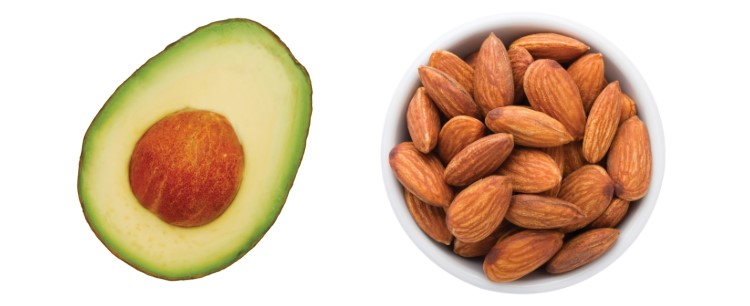
Avocados are very high in monounsaturated fat, important for keeping the heart healthy. There is a good dose of vitamin E in an avocado too, handy to boost your child’s immune system.
Children love avocado as a sandwich spread and as a dip. Avocado also adds a creaminess to smoothies and other dishes. Adding avocado to a meal helps your little one to feel fuller for longer.
Almonds are very high in vitamin E and a great source of calcium for growing bones. Like avocados, almonds are high in monounsaturated fat and make a satisfying and easy snack. Almond butter is a fabulous alternative to peanut butter and worth introducing to small children.
If your child is allergic to tree nuts, try sunflower seeds and sunflower seed butter instead.
Anna Hansen (BSc, Human Nutrition and Psychology) is a mum with three young kids and a nutritionist with a passion for showing people how easy it is to eat for health.

AS FEATURED IN ISSUE 35 OF OHbaby! MAGAZINE. CHECK OUT OTHER ARTICLES IN THIS ISSUE BELOW













